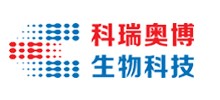产品中心
当前位置:首页>产品中心Anti-UTF1/PE-Cy7
货号: bs-12207R-PE-Cy7 基本售价: 2980.0 元 规格: 100ul
产品信息
- 产品编号
- bs-12207R-PE-Cy7
- 英文名称
- Anti-UTF1/PE-Cy7
- 中文名称
- PE-Cy7标记的未分化胚胎干细胞转录因子1抗体
- 别 名
- hUTF 1; hUTF1; Undifferentiated embryonic cell transcription factor 1; UTF 1; UTF1; UTF1_HUMAN.
- 规格价格
- 100ul/2980元购买 大包装/询价
- 说 明 书
- 100ul
- 研究领域
- 发育生物学 信号转导 干细胞 转录调节因子 表观遗传学
- 抗体来源
- Rabbit
- 克隆类型
- Polyclonal
- 交叉反应
- Human, Mouse, Rat, Cow,
- 产品应用
- ICC=1:50-200 IF=1:50-200
not yet tested in other applications.
optimal dilutions/concentrations should be determined by the end user.
- 分 子 量
- 36kDa
- 性 状
- Lyophilized or Liquid
- 浓 度
- 1mg/ml
- 免 疫 原
- KLH conjugated synthetic peptide derived from Human UTF1
- 亚 型
- IgG
- 纯化方法
- affinity purified by Protein A
- 储 存 液
- 0.01M TBS(pH7.4) with 1% BSA, 0.03% Proclin300 and 50% Glycerol.
- 保存条件
- Store at -20 °C for one year. Avoid repeated freeze/thaw cycles. The lyophilized antibody is stable at room temperature for at least one month and for greater than a year when kept at -20°C. When reconstituted in sterile pH 7.4 0.01M PBS or diluent of antibody the antibody is stable for at least two weeks at 2-4 °C.
- 产品介绍
- background:
UTF1 is a 341 amino acid protein that localizes to the nucleus and is subject to post-translational phosphorylation. Associating with the TFIID complex via an interaction with the TATA box binding protein (TFIID), UTF1 binds to the N-terminal region of ATF-2 and, via this binding, acts as a transcriptional coactivator of ATF-2, thereby enhancing transcriptional activity. Human UTF1 shares 64% homology with its mouse counterpart, suggesting a similar role between species. The gene encoding UTF1 maps to human chromosome 10, which houses over 1,200 genes and comprises nearly 4.5% of the human genome. Defects in some of the genes that map to chromosome 10 are associated with Charcot-Marie Tooth disease, Jackson-Weiss syndrome, Usher syndrome, nonsyndromatic deafness, Wolman’s syndrome, Cowden syndrome, multiple endocrine neoplasia type 2 and porphyria.
Function:
Acts as a transcriptional coactivator of ATF2.
Subunit:
Binds to the N-terminal region of ATF2. Associates with the TFIID complex through interaction with TBP.
Subcellular Location:
Nucleus.
Post-translational modifications:
Phosphorylated.
Database links:
UniProtKB/Swiss-Prot: Q5T230.1
Important Note:
This product as supplied is intended for research use only, not for use in human, therapeutic or diagnostic applications.

